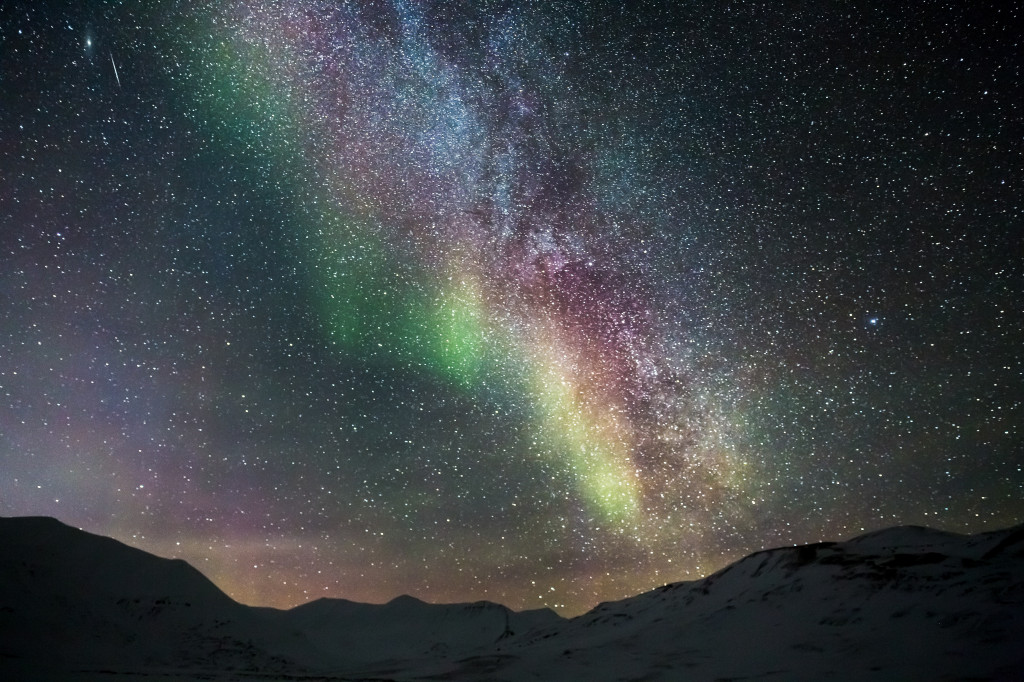Embracing the Night I: Basics of natural darkness and light pollution
Avsnittsöversikt
-
Darkness of nature and dark skies
The aesthetic experience of darkness can be defined in two ways. Darkness can be defined as the physical condition of total absence of light, meaning total darkness like during power outages or being in a room with no light at all. In this case, darkness can be an experience of nothingness, meaning a painful experience with no connection to surrounding environment (Tainio 2023).
On the other hand, natural darkness - the period from sunset to sunrise - is a physical condition of absence of artificial lighting at night (ALAN), or physical condition of darkness of nature and how it presents itself in different lit environments depending on the scale and intensity of artificial lighting at night. This latter interpretation, the darkness of nature, forms the foundation of this module.

Photo: Pixabay, @Noel Bauza
The Value of Natural Darkness
Fear of the dark is a natural biological characteristic of humans, as humans are diurnal species. Since the invention of fire making, artificial light has provided humans with safety and extended our active hours. Most significantly, the invention of electric lighting has transformed the transition between day and night, enabling work and other activities to continue beyond daylight hours. While total darkness can be intimidating, natural darkness can also awaken imagination, offer meaningful experiences, and create safe spaces for humans and tourism.
The night sky has always inspired and guided human. Prehistoric people painted cosmic objects and events in their cave art. For centuries, people relied on the night sky for navigation, tracking time, animal migrations, and planning harvests. Across cultures and history, the stars and the night have been a part of human mythology and storytelling, inspired works of art, folktales and movies. Many cultures have place-based stories, narratives and connections to the night sky. The night sky has evoked countless myths, art, literature, and music from cultures around the world (National Park Service 2024).
The following activities are intended to help you understand the difference between “darkness”, the physical condition of total absence of light, and “natural darkness”, the condition of night-time in nature without artificial lighting, and how it appears in various environments depending on the scale and intensity of artificial light at night. Activities in this module are best done on a clear, dark night.
Activity: Experiencing Natural Darkness
Find the darkest room in your building or home. Take a piece of paper and a pen with you. Close the doors and windows or draw the blinds, and make sure the room is completely dark (no light at all). Set a timer for three minutes. Close your eyes and remain still until the timer goes on.Open your eyes and move to a well-lit area. Write down your experience and feelings while you were sitting in the dark.
What did the experience of darkness evoke? A sense of nothingness? Fear or unease? A feeling of connection? Perhaps beauty or contemplation? Or something else entirely?
Repeat the process outdoors, this time keeping your eyes open throughout. Write down your observations and feelings. Describe how the experience of natural darkness differs from the first activity, where you experienced total darkness indoors.
-
National Park Service (2024). Night Skies: A Cultural Resource. https://www.nps.gov/subjects/nightskies/cultural.htm (Retrieved March 2025)
Tainio, M. 2023. Nothing to See? Paying Attention in the Dark Environment. The Nordic Journal of Aesthetics, 32(65), 42-49. https://doi.org/10.7146/nja.v32i65-66.140104.
-